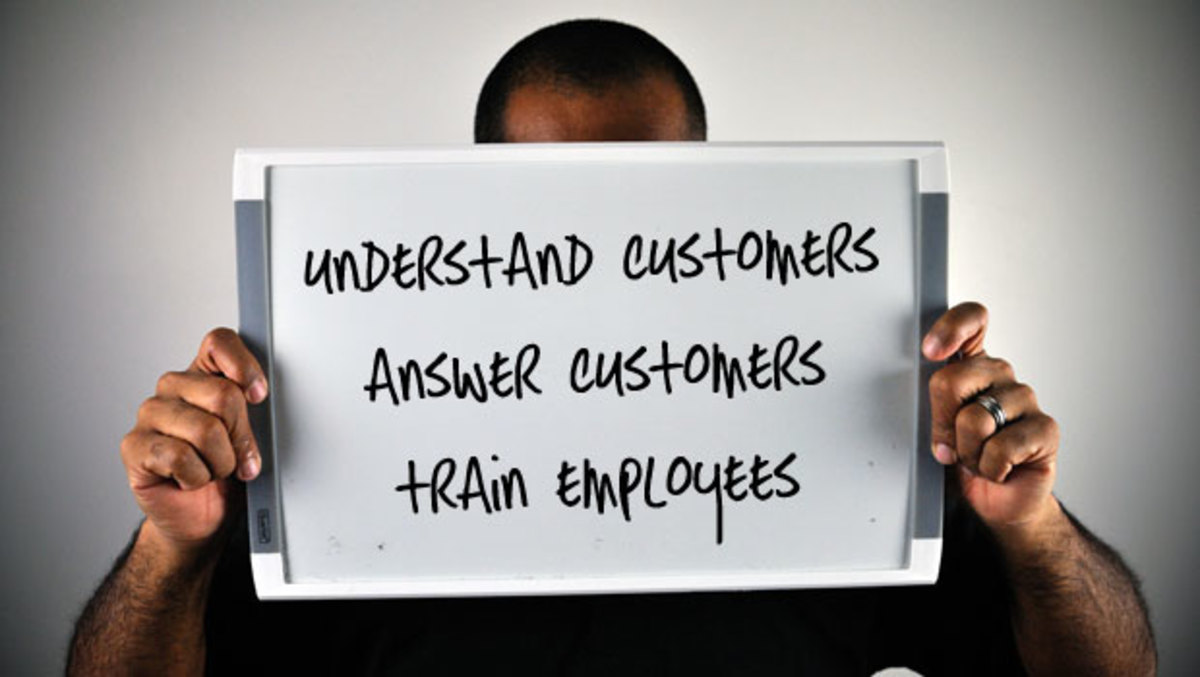Providing Quality Customer Service with a Touch of Mindfulness

What is Customer Service?
Customer service is the litmus test of companies' motivations to improve the delivery of services to clients or stakeholders. As documented in several studies, customer service is essential in generating company profits and customer referrals. The minute customers enter an establishment, there is an underlying expectation that quality services will be provided by patrons or that more information can be elicited on the organization's core pillars of success.
The three forms of customer engagement behaviors highlighted in several studies are positive word-of-mouth, customers helping other customers and customers helping the company. It is no coincidence then that the lack of quality customer service could drive organizations off a pedestal if the employees exhibit unappealing behavior or poor communication etiquette. The extent of companies valuing their clients and customers varies from company to company. But, it is documented that customer reviews do play into product improvements or effect change within the organizational structure of the company. So why do some customers feel a disconnect between marketable products and user experiences online or in brick and mortar stores?
How To Increase Customer Engagement
In bridging the parity between customers' experiences and the delivery of products online or in brick and mortar stores, the co-dependent value for both parties is important because it builds trust and does not lend itself to merely acquiescing to an ideation of perceived benefits. Performance of a company is directly related to its ability to maintain customer engagement. A disregard for providing quality customer service could lead to dismal company reviews and less than remarkable return on marketing investments. As described in Forbes (2015) customers nowadays want to spend time exercising frugality towards spending less time and effort to acquire something.
For instance, online shoppers may experience lower service environment quality, interaction quality, and overall service quality. In other words, in order to elicit customer engagement, customers have to be able to relate to your product or services. This may be a challenging call in the highly competitive environment we found ourselves in where the focus of financial ledgers is more on delivering a certain number of services instead of focusing on improving the quality of customers' experience.
Even with these non-static approaches, the evolution of preferences in customers is eliciting different reactionary responses from firms. For firms to co-exist in the competitive market, they have to become flexible and manage these changes accordingly.
Increasing Customer Service Communication
There are several articles whose purpose revolved around studying the correlation between service improvement practices and customer service experience. The findings revealed in cross-sectional or cross-sectoral studies was the need to increase interactions between customers and the people who advertise or deliver products virtually or in-person. As highlighted in the study on adopting customer service improvement practices (2013), it has been shown that firms need to focus and invest resources towards integrating modes of application channels (brick and mortar, online website and mobile applications).

Strengthening Customer Service Improvement Practices
Customer service can be impacted by the lack of emotional intelligence displayed by the organizational culture of an organization. There are studies that explore the topic by providing an explanation on the characteristics that define organization representatives’ comportments vis-à-vis customers (A.S. Gabriel et al. 2016). The study discusses that strong linkages exists between emotional intelligence and emotional performance. In fact, the evidence pointed to emotional intelligence being a strong predictor of performance and customer satisfaction. However, the study does bring to the surface that, at times, employees may be engaged in an acting performance.
The researchers describe this as either surface acting or deep acting. Surface acting occurs, in this instance, when employees exemplify particular emotions (i.e. sadness, anger, joy, anxiety) that are incongruent with how they feel in reality. In this case, the employee’s mindset has not shifted with the expression of the emotions. On the other hand, deep acting, employees’ mood change accurately reflects the intrinsic emotions of the person performing the act of deep acting. There are confounding factors like an employee receiving negative feedback that could place a damper on these coping mechanisms used by employees who are trying to assimilate to the emotional expectations of their workplace when delivering customer service.
Overcoming Archaic Business Models
The potential solutions displayed in contemporary times is to utilize customer feedback complaint reports, develop metrics to measure customer complaints, and maximize customer service training for internal employees of organizations. Additional steps that can be taken to provide optimal customer service results is consulting employees measuring internal service quality and logging customer service complaints. Depending on the size of a company, logging complaints may prove essential for the survivability of the company.
Additionally, enhancing HR practices targeting emotional labor abilities is another mechanism utilized to influence employee behavior to adhere to rules and regulate emotions under different circumstances vis a vis customer service. The evaluation of these HR practices, may in turn, elicit introspective findings on the efficiency of these practices on employees and organizations as a whole to provide excellent customer service. Thus, the question becomes if when trainings are delivered to employees, is there an internal fit between HR practices and policy domains? As stipulated in one study (Gabriel et al. 2016), at the moment, integrative theories for HR systems applied to emotional labor is underdeveloped.
In providing customer services to the public, there are underlying initiatives that can be undertaken to improve customer satisfaction. These examples include providing robust training to new and existing employees on customer service etiquette, reviewing training policies pertaining to assisting employees to engage in intrapersonal and/or interpersonal initiatives. Beyond the level of abstraction, HR policies and practices embedded within HR systems need to be revised to ensure these systems work conjointly to achieve organizational goals in relation to employee and customer satisfaction. Questions that have been asked by other companies like Lux Resorts who were on the brink of bankruptcy on customer service issues were the following:
- Does the issue lie with back-end IT support or IT logistics? (Harvard Business Review, 2016), instead of focusing on specific skills or script training. Ensuring these issues are solved beforehand, increases service delivery performance and conformance quality and/or reducing their cost.
- Is the company's bottom line focus on a holistic definition of service improvement practices by creating value for others within and outside of the organization?

Customer Service Field Recommendations
Though customer service is the apex used to evaluate the health pulse of an organization, there are recommendations outlined through behavioral research that could lay the foundation to create change in the customer delivery process. These recommendations include:
- Providing customers options for communication purposes when customers want to report concerns, comments or questions. In setting up these options, specify when customers will get a response. Hire enough staff to carry out daily operations because automated messages cannot replace or substitute human interaction.
- Evaluate customer buying patterns online. This will help assess if providing customer service online somehow protect people from structural inequity at the intersection of race, gender and class l It is also important to pay attention to subset groups who are not catered to like students, senior citizens or people with disabilities who need equitable access to customer representatives.
- Pose the following question "Do brick and mortar institutions reflect offline the same systems of inequality, discrimination and structures of power? Remember that you are not and cannot be an expert on everything.
- Most people may not fully grasp instructions from websites, especially those who are not tech savvy. Therefore, simply advising them to go on the website is not enough. It may be convenient for some action items that the website's Q&A section cannot possibly answer, mostly those requiring multiple steps.
- When customer service is not on par with customer's expectations or doesn't meet the company's quality score esthetics, admit when a wrong was committed. More followers are gained when you admit faults and make necessary reparations to customers.
Bibliography
- Dickson, Peter R. (2013). The adoption of customer service improvement practices. Springer (26) 1-15. Available at DOI 10.1007/s11002-013-9263-0.
- Forbes. (2015). Consumer Trends in Health and Wellness. Available at: 〈https://www.forbes.com/sites/thehartmangroup/2015/11/19/consumer-trends-in-health-andwellness/#7c1c0538313e〉.
- Gabriel, A.S., Cheshin, A, Moran, A.M., and Van Kleef, G.A. (2016). Enhancing emotional performance and customer service through human resources practices: A systems perspective. Human Resources Management Review, 26, 14-24.







